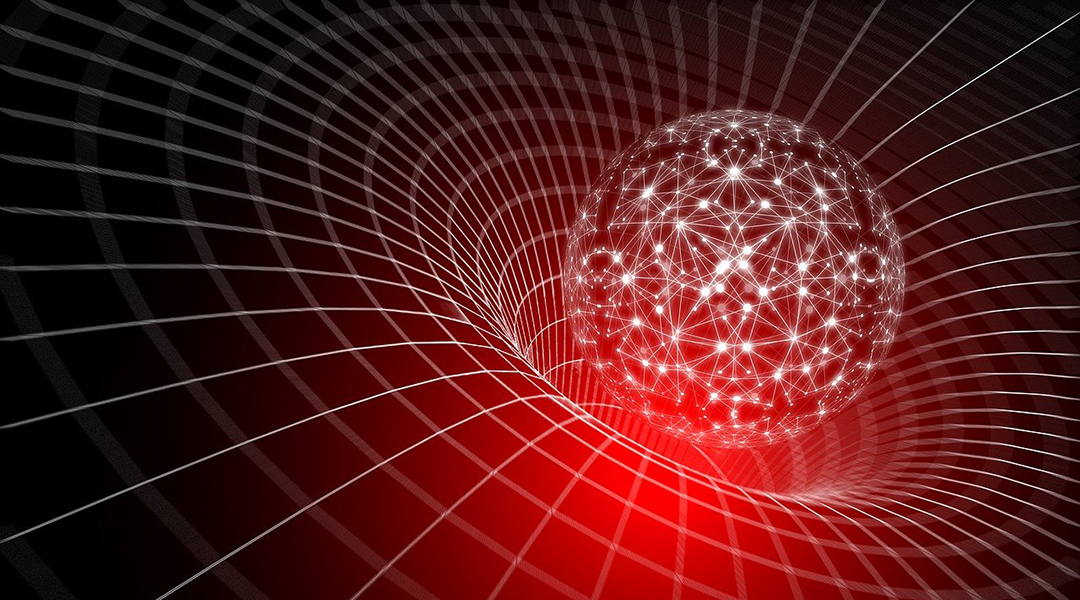A recent study has made strides toward solving one of physics’ biggest puzzles: including all known particles and interactions into the theory of quantum gravity.
The solution is to modify the quantum description of gravity dubbed “fuzzy gravity” by introducing extra dimensions to spacetime. In this theory, spacetime is treated not as a continuous entity but by a grid of discrete points, and adding extra dimensions to this grid results in the occurrence of other fields and particles.
The crux of the challenge in developing a quantum theory of gravity lies in the incompatibility of quantum theory with Einstein’s general theory of relativity, which describes gravity as the curvature of spacetime.
Quantum mechanics, on the other hand, governs the behavior of particles on the smallest scales. Efforts to unify these frameworks have often resulted in nonsensical predictions and outcomes that are clearly at odds with observed reality.
These arise because the smaller the scales at which we probe spacetime geometry using the combined mathematical machinery of general relativity and quantum mechanics, the more wild the quantum fluctuations in the properties of this geometry become, leading to the occurrence of meaningless predictions about the interaction of the gravitational field with itself and with other fields and particles.
Ramping up fuzzy gravity
One common approach to addressing this conundrum is to modify general relativity, replacing it with an alternative gravitational theory that closely mirrors Einstein’s predictions on larger scales but offers a different perspective on spacetime at the quantum level.
At these microscopic scales, where quantum effects become significant, these alternative theories aim to provide a more accurate description.
In the current study, scientists chose to explore one particularly intriguing hypothesis known as fuzzy gravity. In contrast to relativity, fuzzy gravity observes that spacetime might be discrete rather than continuous, consisting of an immense number of isolated points and that it is noncommutative.
In a noncommutative space, the order in which spatial coordinates are multiplied matters — a concept that stands in stark contrast to our usual understanding of geometry, where the area of a rectangle is the same whether we multiply its length by its width or vice versa. This idea has its roots in quantum mechanics, where quantities that are commutative in the classical description of nature, such as the position and velocity of a particle, are no longer so.
While an interesting possibility, fuzzy gravity is not without its own flaws, the major being that it gives a consistent quantum description of only gravity and not of the other fundamental physical interactions, such as electromagnetic, weak, and strong, as well as the elementary particles, like electrons and quarks, that constitute matter. A truly fundamental theory of the subatomic world must encompass all.
To try and solve this, the team followed a general approach to unifying interactions by considering higher-dimensional spacetime, an idea first proposed nearly a century ago by Kaluza and Klein.
They found that if time and three spatial dimensions are extended by extra, discrete, and noncommutative directions, that their interaction with each other and usual four-dimensional spacetime would result in interacting elementary particles very similar to what we observe.
How can future experiments help
Yet, as with many attempts to develop the quantum theory of gravity, their model predicts that significant deviations from general relativity would only occur at incredibly small scales — on the order of the Planck length, approximately 10-35 meters. This is about 20 orders of magnitude smaller than the scales probed by even the most powerful particle accelerators, such as the Large Hadron Collider. As a result, experimentally verifying this theoretical model remains an extraordinarily challenging task.
Despite these challenges, there is hope that quantum gravity effects could eventually be tested through more accessible experiments. Some proposals suggest that even tabletop experiments, such as precision measurements of pendulum behavior, gravitational pull experienced by a levitating body, or tests of the universality of free fall, might reveal subtle quantum gravity effects. If such experiments can be realized, they may provide a means to test the authors’ theoretical predictions.
Meanwhile, the research team has no plans to halt their investigations. They intend to continue exploring whether their approach, or similar ones, could fully account for the particles and interactions we observe in nature — a concept known as particle phenomenology.
This includes examining the possibility of describing these phenomena within the framework of noncommutative gravity, even in a continuous space.
“Our plan is to examine further the unification schemes discussed in the present work […] as well as the one [examined in the previous studies], which is the continuum version of the [gravity theory] examined here, from phenomenological as well as cosmological points of view,” the authors wrote.
Reference: Danai Roumelioti et al, Fuzzy Gravity: Four-Dimensional Gravity on a Covariant Noncommutative Space and Unification with Internal Interactions, Progress of Physics (2024). DOI: 10.1002/prop.202400126
Feature image credit: geralt on Pixabay

















